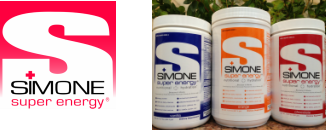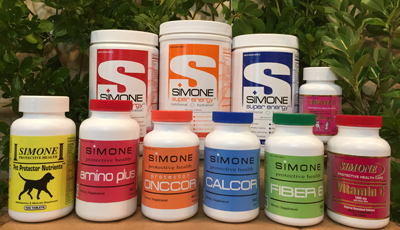We do not diagnose disease or recommend a dietary supplement for the treatment of disease. You should share this information with your physician who can determine what nutrition, disease and injury treatment regimen is best for you. You can search this site or the web for topics of interest that I may have written (use Dr Simone and topic).
“We provide truthful information without emotion or influence from the medical establishment, pharmaceutical industry, national organizations, special interest groups or government agencies.” Charles B Simone, M.MS., M.D.
PROSTATE CANCER TREATMENT – ORAL MEDICATIONS
Several medications in pill form are commonly used as part of prostate cancer treatment, particularly for hormone therapy (androgen deprivation therapy, or ADT), which slows the cancer’s growth by reducing testosterone levels. Here are some examples:
Abiraterone (Zytiga) – This pill is often used for advanced or metastatic prostate cancer. It works by blocking an enzyme (CYP17) that helps produce androgens (male hormones) in the body, starving the cancer of the hormones it needs to grow.
Enzalutamide (Xtandi) – Another oral medication, it’s an androgen receptor inhibitor. It prevents testosterone from binding to cancer cells, slowing their growth. It’s typically used for metastatic or castration-resistant prostate cancer.
Apalutamide (Erleada) or Darolutamide (Nubeqa) – These are newer androgen receptor inhibitors, also taken as pills, used for non-metastatic or metastatic castration-resistant prostate cancer.
Bicalutamide (Casodex) – An older anti-androgen pill, often used in combination with other treatments to block testosterone’s effects on cancer cells.
For early-stage prostate cancer, pills might not be the primary treatment—options like surgery, radiation, or active surveillance are more common. In advanced cases, these medications are often paired with other therapies, like injections (e.g., luteinizing hormone-releasing hormone agonists) or chemotherapy.
Apalutamide (Erleada), Darolutamide (Nubeqa), and Bicalutamide (Casodex) are all nonsteroidal antiandrogens (NSAAs) used to treat prostate cancer by blocking the androgen receptor (AR) to inhibit the effects of testosterone and slow cancer growth. While they share a common mechanism of action, their chemical structures, efficacy, and side effect profiles differ due to advancements in their design. Let’s break this down:
Chemical Similarity
Bicalutamide (Casodex) is a first-generation NSAA with a relatively simple chemical structure, featuring a fluorinated anilide backbone. It binds to the AR competitively but with moderate affinity compared to newer drugs.
Apalutamide (Erleada) and Darolutamide (Nubeqa) are second-generation NSAAs. They were developed to overcome limitations of first-generation drugs like Bicalutamide, such as lower potency and partial agonist activity in some resistant cancers. Apalutamide has a structure that includes a cyclobutane ring and binds to the same ligand-binding site as Bicalutamide but with 7- to 10-fold greater affinity. It’s structurally distinct but shares some features, like an anilide core, optimized for stronger AR inhibition.
Darolutamide is structurally unique, with a pyrazole ring and a different molecular configuration that reduces blood-brain barrier penetration. It has an even higher AR affinity than Apalutamide (Ki = 11 nM vs. 93 nM for Apalutamide and ~100 nM for Bicalutamide), making it chemically quite distinct despite the shared antiandrogen goal.
So, while they’re related as NSAAs, Apalutamide and Darolutamide are not “chemically identical” to Bicalutamide. They’re evolved versions with enhanced receptor binding and pharmacokinetic properties.
Results (Efficacy)
Bicalutamide: Used primarily with androgen deprivation therapy (ADT) for metastatic prostate cancer, it improves progression-free survival (PFS) modestly (e.g., HR 0.74 vs. placebo). However, it’s less effective in castration-resistant prostate cancer (CRPC) due to weaker AR antagonism and potential agonist activity in resistant tumors.
Apalutamide: Approved for non-metastatic CRPC (nmCRPC) and metastatic castration-sensitive prostate cancer (mCSPC), it significantly extends metastasis-free survival (MFS) (e.g., 40.5 months vs. 16.2 months in the SPARTAN trial) and overall survival (OS) in mCSPC (TITAN trial). It’s more potent and effective against resistant AR mutations than Bicalutamide.
Darolutamide: Approved for nmCRPC, it also markedly improves MFS (e.g., 40.4 months vs. 18.4 months in the ARAMIS trial) and shows a trend toward better OS. Its unique structure allows it to block a broader range of AR mutants, giving it an edge over Bicalutamide.
Comparison: Apalutamide and Darolutamide outperform Bicalutamide in nmCRPC, with longer MFS and better control of disease progression. Bicalutamide’s results are more limited, especially in advanced or resistant disease, due to its lower potency and older design.
Side Effects
Bicalutamide: Common side effects include hot flashes (50%+), breast tenderness/gynecomastia (up to 70% due to peripheral testosterone aromatization), fatigue, and liver toxicity (rare but serious, ~1%). It has a favorable tolerability profile overall, with minimal central nervous system (CNS) effects due to limited brain penetration.
Apalutamide: Side effects include fatigue (30-40%), rash (25%, often severe), falls/fractures (10-20%), and hypothyroidism (8%). It crosses the blood-brain barrier more than Bicalutamide, leading to CNS effects like seizures (0.2-0.8%) and cognitive issues in some patients. Adverse events lead to discontinuation in ~15% of cases.
Darolutamide: Notable for fewer side effects due to low CNS penetration, with fatigue/asthenia (16%), limb pain (6%), and rash (3%) being common. Seizures are rare (<0.2%), and discontinuation due to adverse events is lower (~9%) than with Apalutamide or even Bicalutamide in some studies.
Comparison:
Bicalutamide has a higher incidence of gynecomastia and liver risks but fewer CNS-related issues.
Apalutamide’s side effects are more frequent and include unique risks like rash and seizures.
Darolutamide stands out for better tolerability, with fewer and milder side effects, likely due to its chemical design minimizing off-target effects.
CONCLUSION Apalutamide and Darolutamide are not chemically identical to Bicalutamide but are advanced successors with overlapping yet improved mechanisms. They deliver superior results in terms of delaying disease progression and managing resistant cancers, though they don’t produce the “same” outcomes as Bicalutamide due to their enhanced efficacy. Side effects differ: Bicalutamide’s are more hormonal and hepatic, Apalutamide’s include CNS risks, and Darolutamide’s are milder overall. The choice between them depends on the cancer stage, patient tolerance, and specific risks, but the second-generation drugs generally offer better performance at the cost of a shifted side effect profile.
C O S T S
I’ll focus on retail prices (without insurance) for a standard 30-day supply, as these are commonly referenced benchmarks, and note that actual prices in 2025 may differ slightly due to inflation, discounts, or generic availability.
Bicalutamide (Casodex): Bicalutamide has been available as a generic for years, making it the least expensive of the three. For a 30-day supply (50 mg daily, 30 tablets), the retail price typically ranges from $15 to $50 in the U.S. as of recent data. Brand-name Casodex can still cost around $500-$600 for 30 tablets, but generics dominate the market, keeping costs low. By 2025, generics should remain similarly priced unless supply chain issues arise, though no major shifts are expected.
Apalutamide (Erleada): Apalutamide is a newer, patented drug with no generic version as of 2025. The standard dose is 240 mg daily (four 60 mg tablets), so a 30-day supply is 120 tablets. Retail prices in the U.S. are steep, typically ranging from $13,000 to $15,000 for 30 days, based on 2023-2024 figures from sources like GoodRx and manufacturer reports. A post on X from mid-February 2025 mentioned a box of 112 tablets costing Italy’s health service (SSN) €5,351.83 (about $5,700 USD at current exchange rates), which aligns with a slightly lower per-tablet cost for bulk packaging, suggesting U.S. retail prices remain higher for smaller supplies. By 2025, without generic competition, expect costs to hover around $14,000-$16,000 for 30 days, adjusted for inflation.
Darolutamide (Nubeqa): Darolutamide, also under patent with no generic, is dosed at 600 mg twice daily (1,200 mg total, four 300 mg tablets), equating to 120 tablets for 30 days. Retail prices in the U.S. range from $12,000 to $14,000 for a 30-day supply, per recent pharmacy data. It’s slightly cheaper than Apalutamide in some cases, possibly due to pricing strategies by Bayer, its manufacturer. In 2025, costs are likely to stay in the $13,000-$15,000 range, reflecting similar market dynamics to Apalutamide.
Key Notes:
Insurance and Discounts: With insurance or manufacturer coupons, out-of-pocket costs can drop significantly (e.g., to $0-$100/month for insured patients), but this varies by plan and eligibility. Medicare Part D often covers these drugs, with co-pays depending on the tier (typically high for specialty drugs like Apalutamide and Darolutamide).
International Variance: Prices outside the U.S., like the Italian SSN example, may be lower due to government negotiations.
Bicalutamide’s Edge: Its generic status makes it vastly cheaper, often 100-1,000 times less expensive per month than the second-generation drugs.
© 2025 C B Simone, M.MS., M.D.



